Basil Seeds Need Warmth And Light To Germinate – Start Yours In Early Spring

Reviewed By PETER LICKORISH

Peter is a Horticulture Lecturer and self-employed Horticulturist, with a passion for diverse areas of the industry - from garden design to the science behind plant growth and propagation. He has completed the Royal Horticultural Society’s Master of Horticulture (MHort) Award and lectures on RHS courses at Bedford College.
Contributions From EMILY CUPIT

Emily is a Gardening Writer, Photographer and Videographer from Derbyshire, UK. She is the Founder of Emily's Green Diary - a community of more than 75,000 people who share in her gardening journey.
IN THIS GUIDE
BASIL GUIDES
Harvesting
Propagation
Sowing
A hugely popular and impressively versatile ingredient, basil is as effective in the kitchen as it is endearing to grow!
As a result, it’s ever-present in the homes and gardens of budding chefs and horticulturists across Britain.
Its ease of growth also makes it an excellent starting point for those not yet entirely confident in their gardening abilities.
If that sounds like you, here’s a brief rundown of the steps involved in growing basil from seed:
- Select the variety of basil you’d like to grow.
- Prepare pots, planters or seed trays.
- Sow basil seeds and allow them to germinate in temperatures of 20°C and over.
- Transplant outdoors in your garden, or move into a larger pot and grow on a sunny windowsill.
- Water and fertilise – harvesting regularly as and when you need the leaves.
If that sounds a little overwhelming for a novice gardener, don’t worry – we’ve explained each step in more detail below.
| Difficulty | Easy |
| Equipment Required | Seed trays, compost, plastic wrap, fertiliser, pots |
| When To Sow | April or May |
| When To Plant Out | June |
When To Sow Basil Seeds
Because basil is a Mediterranean herb, it prefers warmer temperatures and plentiful sunshine.
Therefore, it’s best to grow it during April or May – the more hospitable months of the year in the UK.
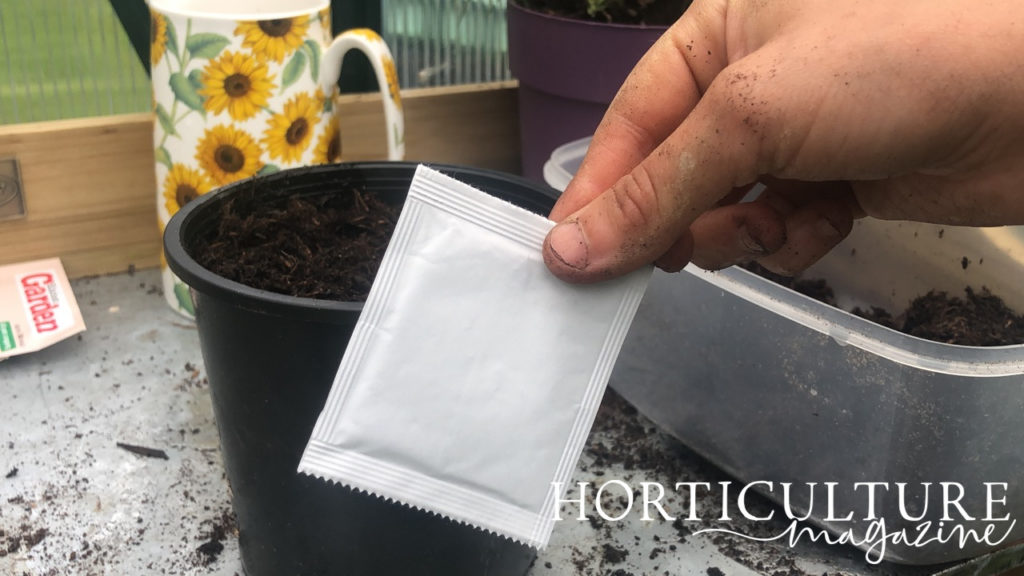
On the other hand, if you’re growing it indoors, it can be cultivated at any time of the year.
In fact, it’s a good idea to bring at least some of your al fresco plants inside when the temperature drops to ensure you have a steady supply of leaves in winter.
Those with a heated propagator will also find them extremely useful when growing basil from seed.
1) Select Your Variety
Sweet basil (AKA Classic Italian Basil) is probably the type with which you are most familiar, since it’s the one commonly found in supermarkets and has the classic earthy aroma and sweetness.

However, there are plenty of others to experiment with.
Thai basil carries a slightly spicy kick to its sweetness, while purple varieties have a stronger odour and cinnamon ones pack an extra punch.
2) Prepare Planter Trays
Use a seed tray to give your basil seeds the best chance of flourishing.
If you don’t have one, a washing-up bowl with 4 drainage holes drilled into the base or small individual pots will also do the trick.
Whatever you use, the drainage holes are important.
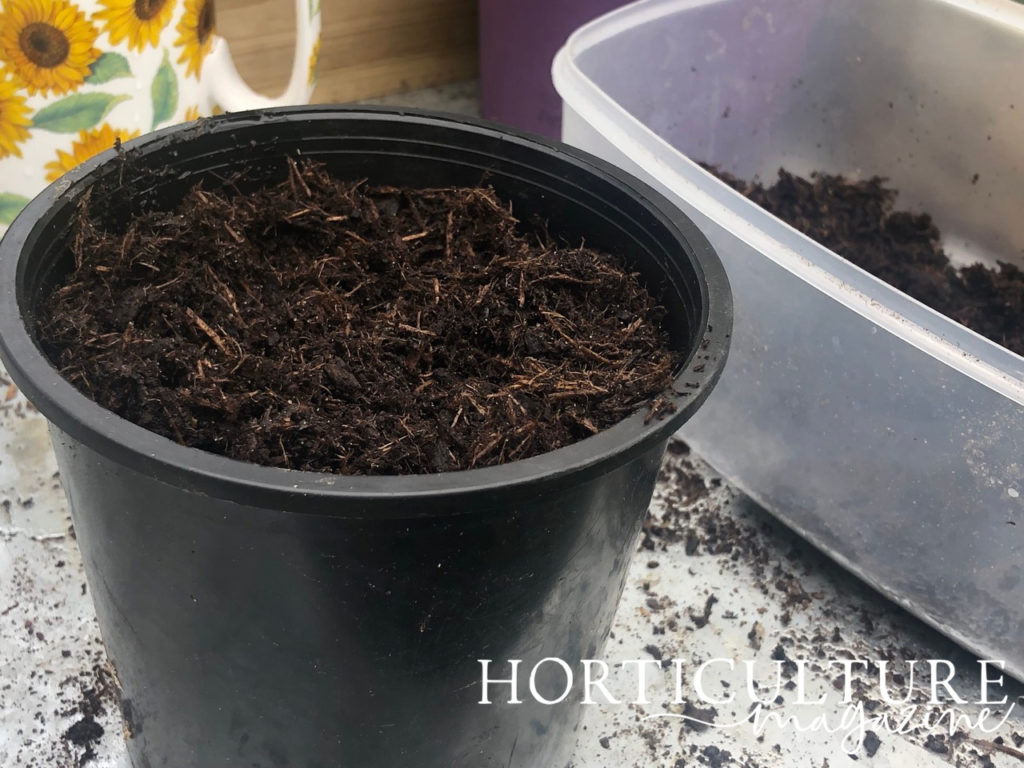
Fill your containers with multi-purpose compost that’s free from peat but rich in nutrients.
Firm this down gently with the flat of the hand.
Moisten the soil, but don’t allow it to become saturated, as this will drown the seeds before they can germinate.
3) Sow Your Basil Seeds
“Spread the seeds thinly across the top of the compost,” explains Peter Lickorish, a Horticulturist with 5 years of professional experience.
“They do not need to be covered with compost, as light is needed for germination.
“Vermiculite could be used to cover seeds, as it can let light through.”
Cover the tray or pots or glass to preserve heat and humidity.
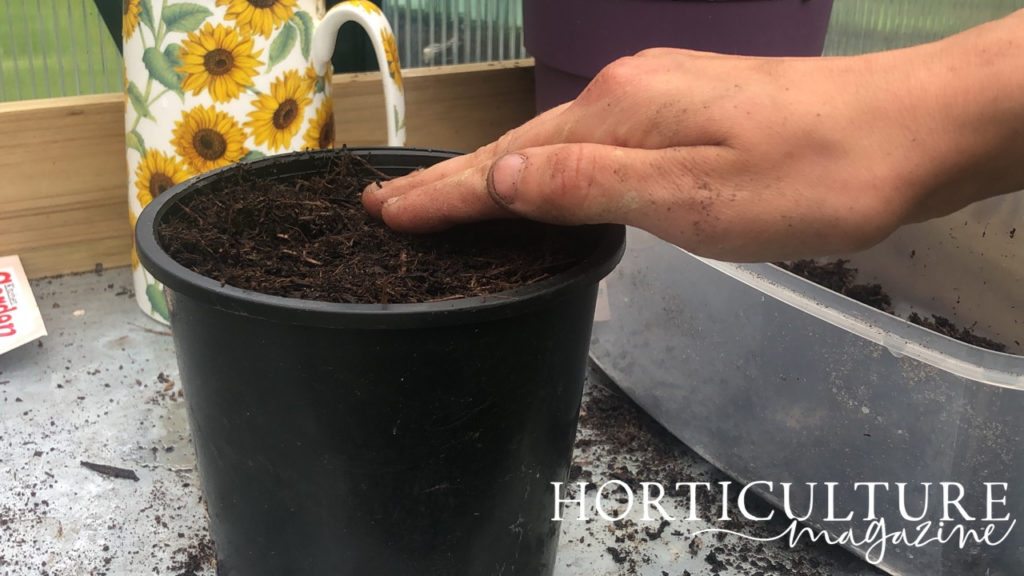
Water the soil daily but sparingly to ensure it remains moist but not waterlogged.
“Watering from a try underneath can prevent seed from being unsettled,” Peter suggests.
The seed trays should be placed on a warm windowsill that maintains a temperature of around 22°C but isn’t exposed to direct sunlight.
A heated greenhouse can be used from late spring.
After 1-2 weeks, the first shoots should begin to appear.
4) Transplant Outdoors
Once the seedlings have grown large enough to handle (at least 3cm in height), you may transplant them.
This can be directly into the soil outdoors or into pots around twice the size if you plan to keep them inside.
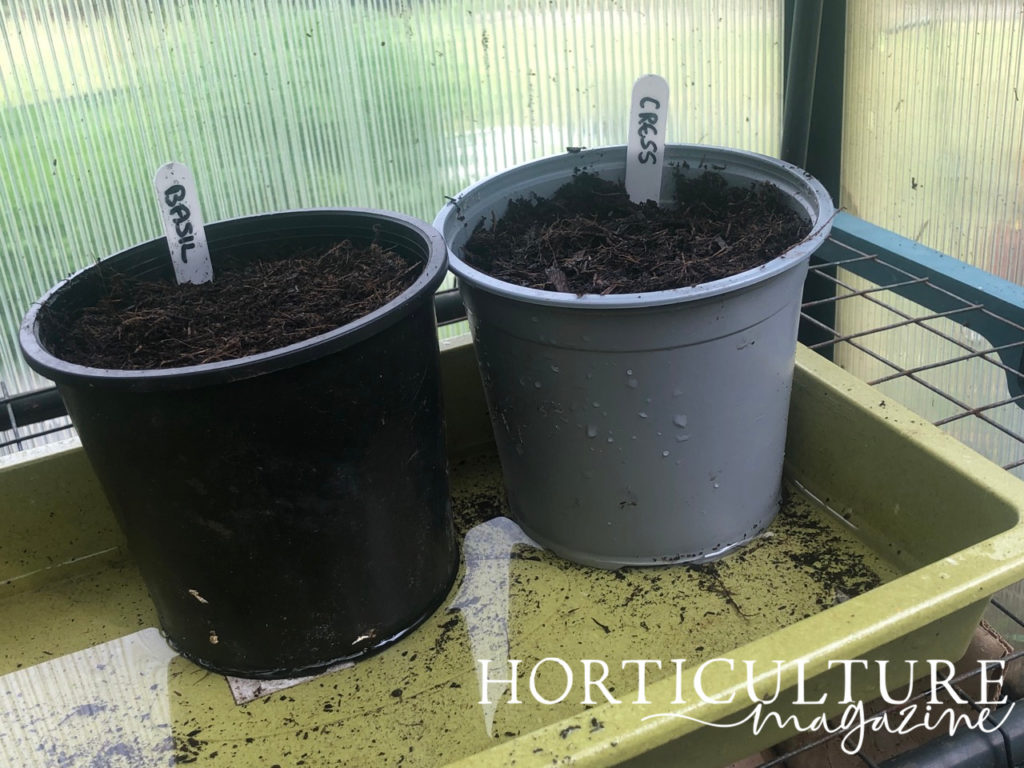
“Potting them into gradually larger pots in stages can help prevent them from sitting in damp compost,” says Peter.
If planting into the ground, choose a spot sheltered from wind and frost and place the plants around 30cm apart.
For indoor plants, expose them to as much sunlight as possible.
5) Water & Fertilise Regularly
Basil will appreciate good nutrition, so fertilise the potted plants monthly by using nettle tea or something similar.
Water well (once every 2 days in the height of summer), but avoid getting the leaves wet.
This should prevent powdery mildew or other diseases from developing.
Prune your plants regularly and ruthlessly.
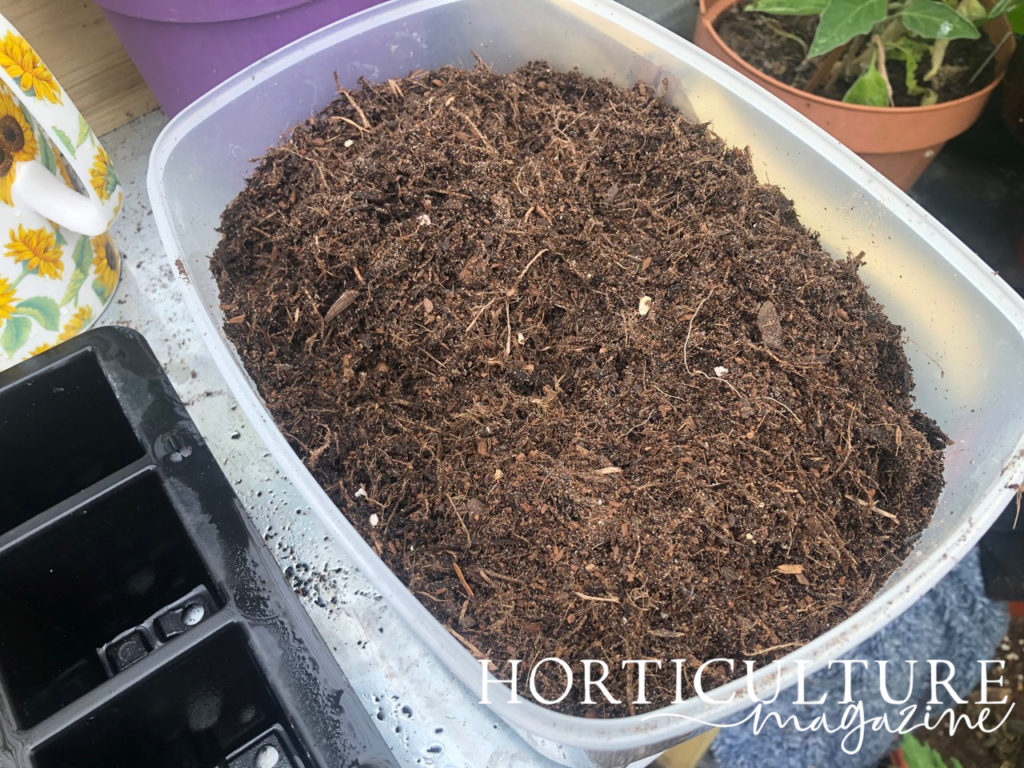
Prune them back to 20cm in height and strip away as many leaves as you need, taking care to always leave at least three pairs of offshoots from the main stem so that it can continue to thrive.
“Watch out for common problems with seedlings that include slugs, snails and damping off, where stems snap and rot from excess water,” says Peter.
“Try not to leave trays of seeds sitting in water for long periods and if slugs and snails are a problem with basil seedlings in a greenhouse, consider placing hollowed oranges around, in which they will accumulate and can then be disposed of.”

